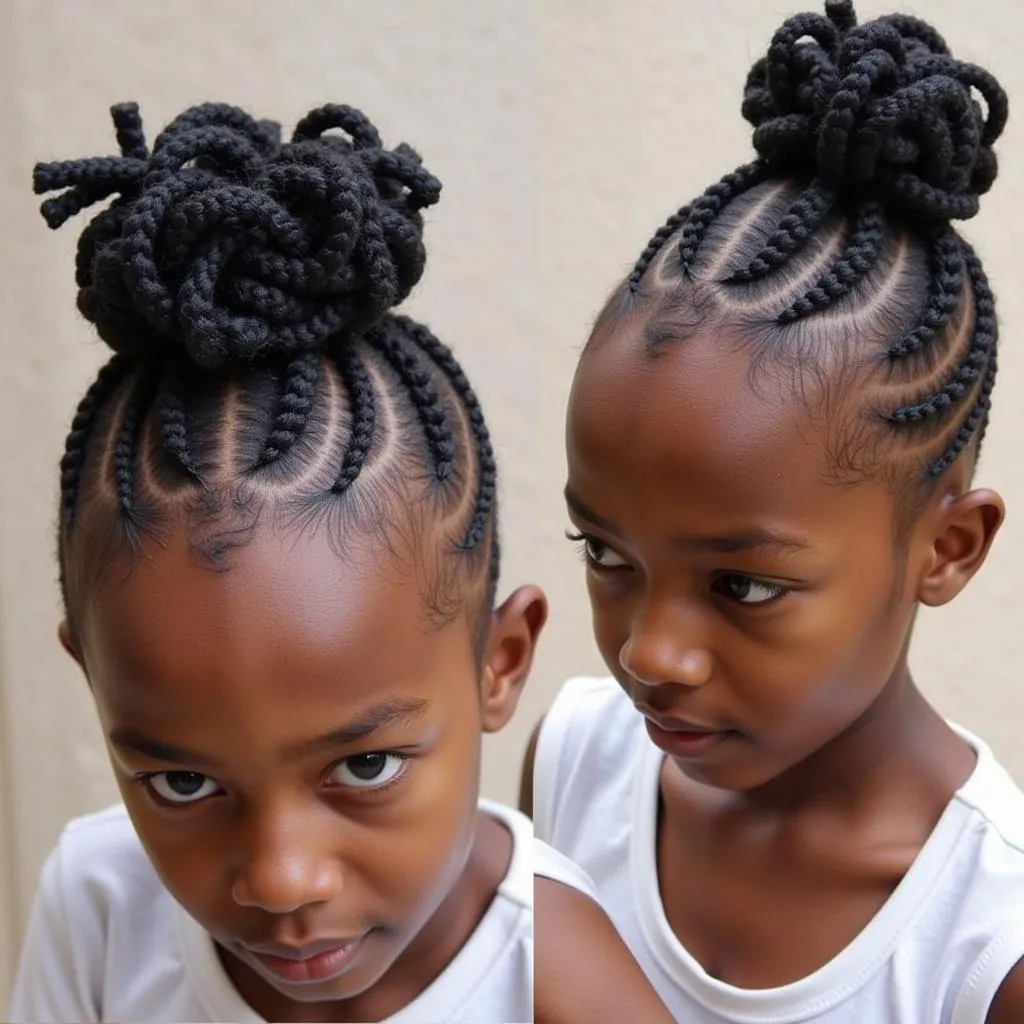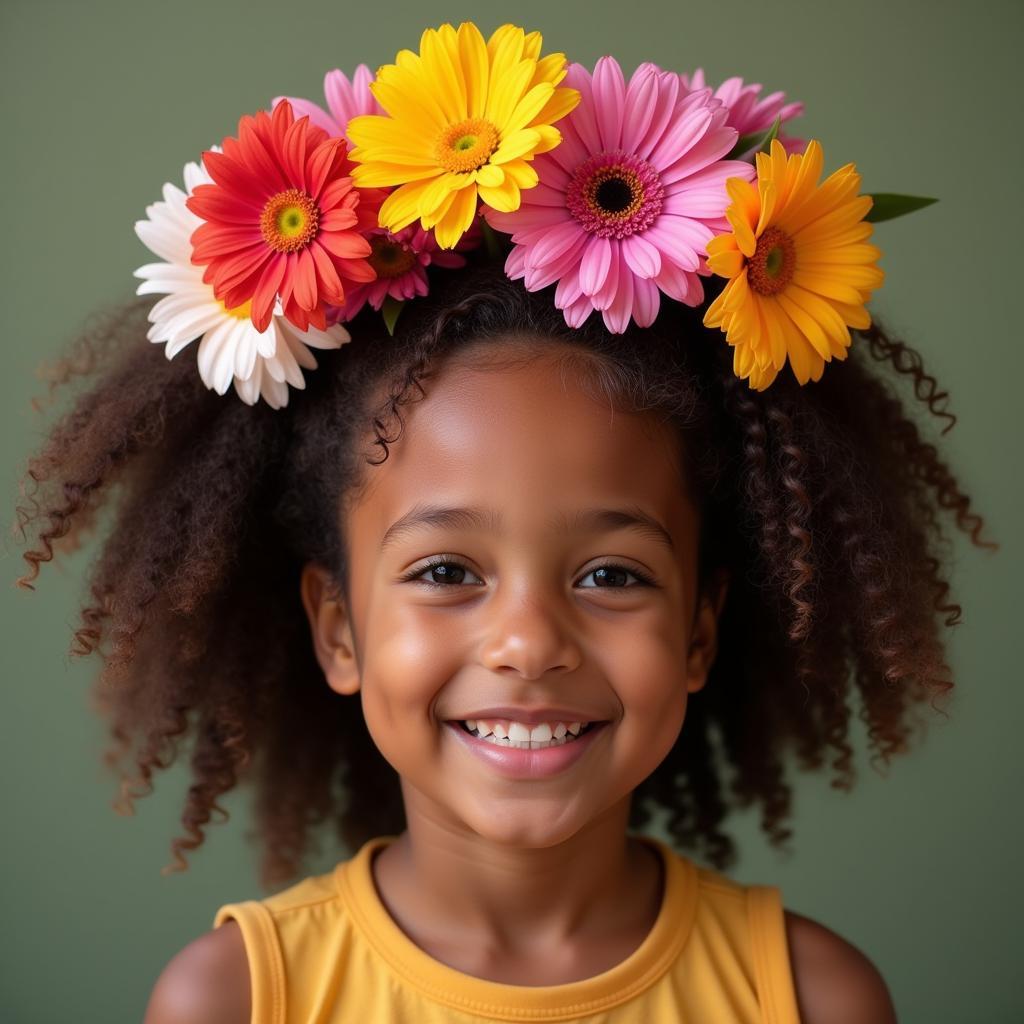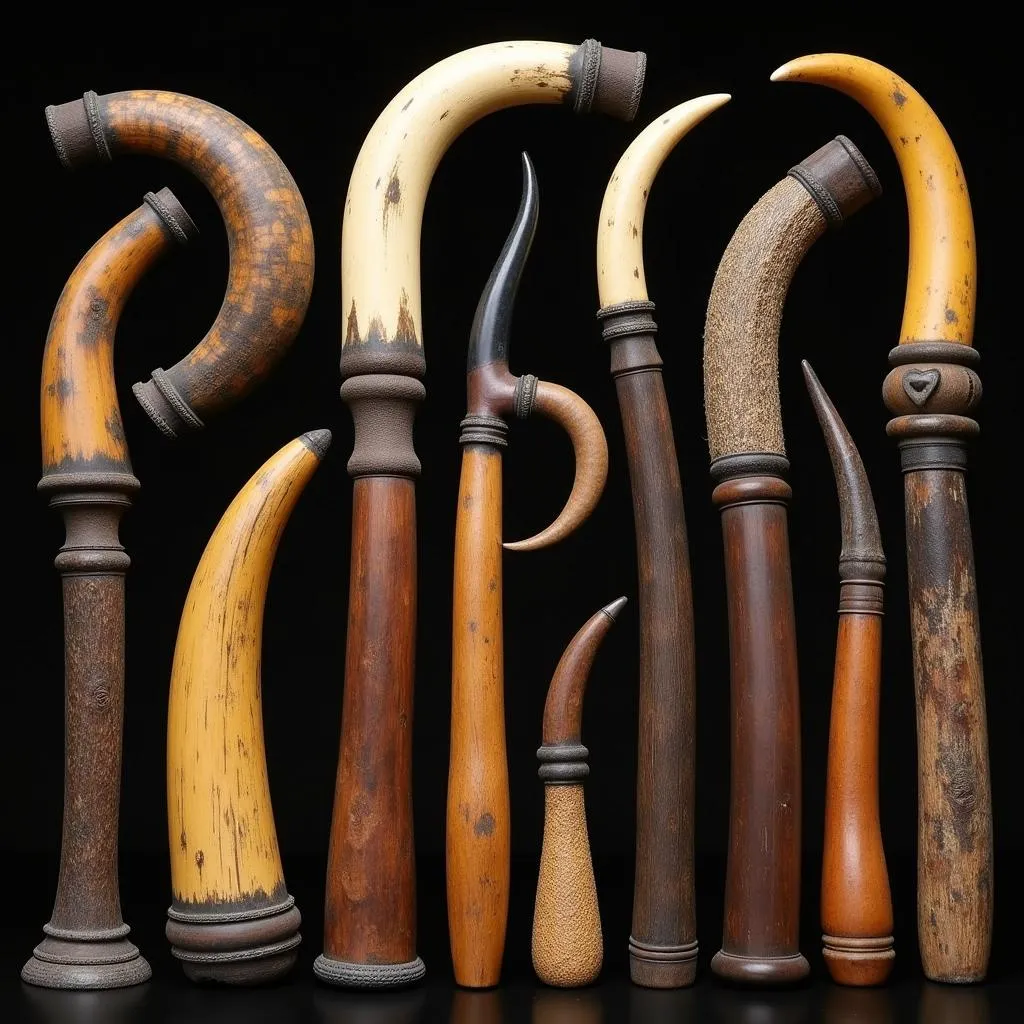African Hair Styling of Boys: A Comprehensive Guide
African hair is known for its versatility and beauty, and when it comes to styling boys’ hair, there are endless possibilities. From classic fades to intricate braids, the styles are as diverse as the African continent itself. This article explores the popular and traditional African hair styling trends for boys, offering insights into the cultural significance and practical considerations of these styles.
Understanding the Cultural Significance of African Hair Styling
African hair styling is more than just aesthetics; it’s a reflection of cultural heritage, identity, and self-expression. For boys, hairstyles can symbolize strength, masculinity, and lineage. In many African communities, hair is seen as a symbol of power and pride, with certain styles signifying specific social status or belonging to a particular tribe.
“In many African communities, hair is a sacred element, symbolizing one’s connection to their ancestry and spiritual heritage,” says Aisha Kabwe, a leading hairstylist and cultural anthropologist.
Exploring Popular African Hairstyles for Boys
Here’s a look at some popular African hairstyles for boys, each with its unique charm and cultural significance:
1. Fades and Taper Cuts
Fades and taper cuts are popular for their clean and sharp look. These styles involve gradually transitioning from a short, close-cut hair length on the sides and back to a longer length on top.
Variations:
- High Top Fade: This style features a high top with faded sides and back.
- Temp Fade: This style fades only around the temples, leaving the top and back longer.
- Burst Fade: This style incorporates a burst of hair on the top, creating a unique and stylish look.
2. Braids and Cornrows
Braiding is a common tradition across many African cultures. Braids can be styled in various ways, from simple cornrows to intricate patterns.
Types of Braids:
- Cornrows: These are straight braids that lie close to the scalp, typically running from the front of the head to the back.
- Box Braids: These are square-shaped braids that can be styled in different lengths and thicknesses.
- Fulani Braids: These are a combination of cornrows and small braids, often adorned with beads or other decorative elements.
3. Afro
The afro is an iconic hairstyle that represents Black pride and natural beauty. This style allows hair to grow naturally into its full, voluminous shape.
Styling Variations:
- Big Afro: This style features a large, voluminous afro.
- Short Afro: This style features a shorter, more compact afro.
- Tapered Afro: This style features a tapered afro with faded sides and back.
4. Locs
Locs, or dreadlocks, are achieved by allowing hair to naturally mat and twist into ropes. This style is a symbol of spirituality and cultural identity for many people of African descent.
Types of Locs:
- Freeform Locs: This style involves allowing hair to loc naturally without any manipulation or twisting.
- Sister Locs: This style involves twisting hair into small locs with the help of gel or other products.
- Comb Locs: This style involves using a comb to create locs, resulting in tighter and more defined locs.
Practical Considerations for Styling African Boys’ Hair
Maintaining African Hair:
- Moisturizing: African hair tends to be drier than other hair types, so it’s important to moisturize it regularly.
- Protecting: Using protective styles like braids or locs can help to protect hair from damage and breakage.
- Trimming: Regular trims are important to prevent split ends and keep hair healthy.
Choosing the Right Hairstyle:
- Age: Choose styles that are appropriate for your son’s age and maturity level.
- Lifestyle: Consider your son’s lifestyle and activities when choosing a hairstyle.
- Personality: Let your son express his personality through his hairstyle.
Where to Find a Skilled Barber or Stylist:
- Local Salons: Look for salons specializing in African hair styling.
- Word of Mouth: Ask friends and family for recommendations.
- Online Reviews: Check online reviews to find highly rated stylists.
FAQ (Frequently Asked Questions)
Q: How often should I wash my son’s African hair?
A: It’s recommended to wash African hair once or twice a week to maintain its moisture balance.
Q: What are some good hair products for African boys’ hair?
A: Look for products specifically designed for African hair, such as moisturizing shampoos, conditioners, and styling creams.
Q: How can I learn more about African hair styling?
A: There are many online resources, books, and workshops that can teach you about African hair styling. You can also consult with a skilled hairstylist for personalized advice.
Conclusion
African hair styling for boys is a celebration of heritage, individuality, and beauty. Whether you choose a classic fade, intricate braids, or a natural afro, the style should reflect your son’s unique personality and celebrate his African heritage. By understanding the cultural significance and practical considerations of these styles, you can help your son embrace his African heritage with pride and confidence.
 African boy braids styles
African boy braids styles
Remember, the best hairstyle is one that your son feels comfortable and confident in!
For further assistance and guidance on African hair styling for boys, reach out to us. We offer a variety of services tailored to meet your unique needs.
Contact Us:
- Phone: +255768904061
- Email: [email protected]
- Address: Mbarali DC Mawindi, Kangaga, Tanzania
We’re here to help you find the perfect style for your son and celebrate his African heritage with pride!

